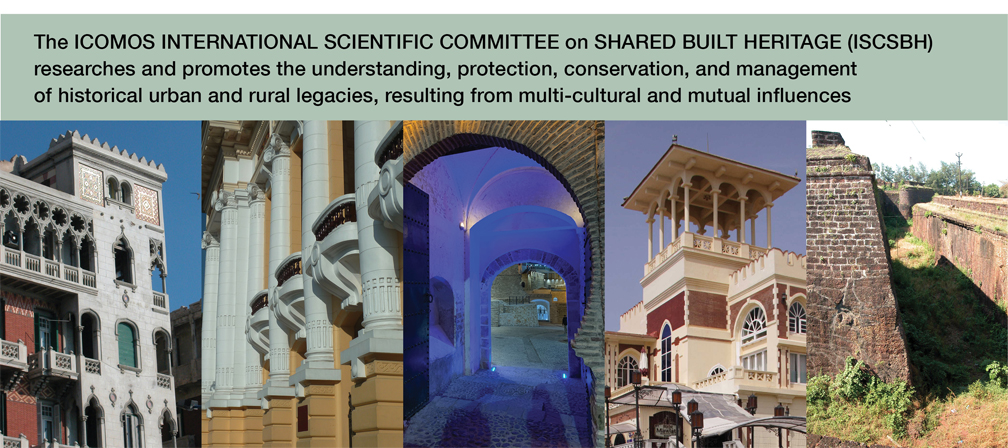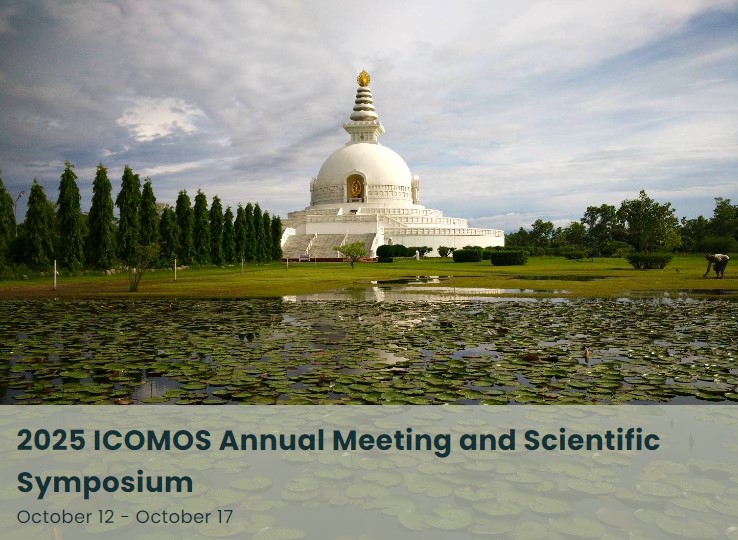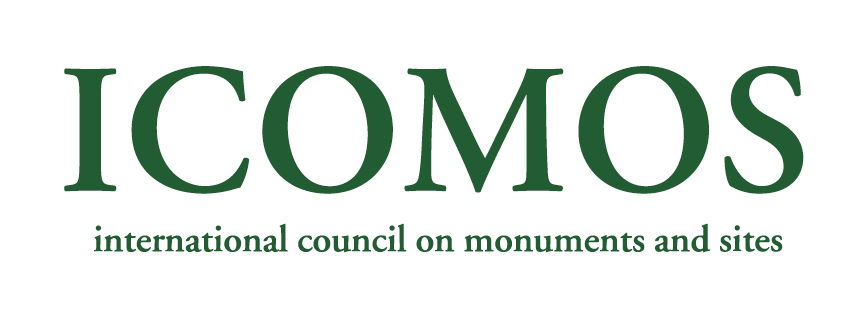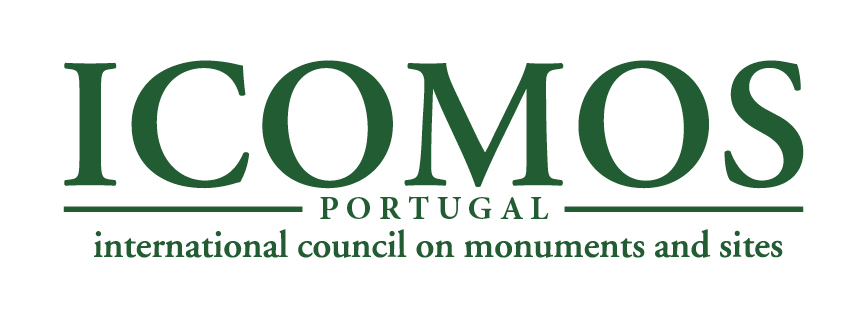Ver. 2021/04/07
By-Laws for ISCSBH
(The ICOMOS International Scientific Committee on Shared Built Heritage)
1. Establishment
The International Scientific Committee on Shared Built Heritage (hereinafter referred to as “the Committee” or “ISCSBH”) is established in accordance with current ICOMOS statutes, procedures, principles, and guidelines related to ISCs including:
• the ICOMOS Statutes adopted at the 19th General Assembly in Delhi, in December 2017;
• the ICOMOS Rules of Procedure for the General Assembly as amended at the AGA 2019, Marrakech;
• the Ethical Principles adopted in Florence, November 2014;
• the Dubrovnik Valetta Principles 2010;
• the Malta Guidelines for ISCs 2009 and
• the Eger Xi’an Principles 2008.
These By-Laws are consistent in their definitions, aims, activities and actions with those of ICOMOS as expressed in Articles 3 and 4 of the ICOMOS Statutes.
2. Aims
The ICOMOS International Scientific Committee on Shared Built Heritage (ISCSBH) researches and promotes the understanding, protection, conservation, and management of historical urban and rural legacies, resulting from multi-cultural and mutual influences.
3. Functions
3.1 The Committee shall:
a) Provide a platform for exchange of ideas and dissemination of information on Shared Built Heritage.
b) Provide technical advice on Shared Built Heritage.
c) Prepare or study doctrinal texts when appropriate and inform the International Secretariat where a text is being prepared.
d) Propose, approve, and implement each Triennial Work Plan, under By-law 6(8)(h).
e) Form sub-committees, task forces and/or working groups whenever necessary to perform certain tasks, which will enable ISCSBH to fulfil its objectives.
f) Try as far as reasonably possible to make technological provision for members to participate remotely in proceedings where it is not possible for them to attend in person.
3.2 The Committee may:
a) Prepare and submit nominations for Honorary Membership prior to a Triennial General Assembly in the appropriate format and in the requisite timescale.
b) Become involved in the preparation of Resolution(s) in advance of a Triennial General Assembly in conjunction with other ISCs.
4. Activities
4.1 The Committee shall engage in the following activities:
a) Research on Shared Built Heritage, including identifying and understanding significant sites globally, and the protection, conservation, and management of this heritage
b) Promotion of Shared Built Heritage.
c) Encouragement of knowledge and understanding of Shared Built Heritage.
d) Foster the gathering and sharing of diverse professional experience and knowledge and developing guidance for ICOMOS on Shared Built Heritage considering cultural diversity and sensitivities and in cooperation with other ICOMOS Scientific and National Committees.
e) Foster the awareness raising, appreciation and interpretation of Shared Built Heritage.
f) Support capacity building for Shared Built Heritage conservation, management, and valorisation.
g) Address the needs of new Associate Members and Emerging Professionals in developing their specialisation and competence in Shared Built Heritage.
4.2 These aims shall be included and detailed in the forecast ISC Triennial Work Plan that the Committee shall prepare to coincide with each triennial General Assembly of ICOMOS.
5. Membership
5.1 The Committee shall be composed of Expert and Associate Members.
The Committee shall seek to reflect, in its membership and Bureau, regional and cultural diversity in the available expertise in the field of conservation of Shared Built Heritage.
5.2 The Committee may appoint Institutional Members.
5.3 The Committee may appoint Honorary Members.
5.4 The Committee may invite a non-ICOMOS Member able to make significant contributions to participate in its activities. Invited members have no voting rights and they will be encouraged to apply for ICOMOS membership.
5.5 Applications relating to all categories of membership must be sent to ISCSBH with a copy for information to the applicant’s National Committee, or where none exists to the International Secretariat. The application to include a cover letter/email together with an ISC SBH Application form (available from the President, Vice President or Secretary General) and additional requested information
5.6 The Committee shall adopt minimum Criteria for Admission and a transparent and well understood methodology for assessing and verifying individual competencies and expertise of applicants.
5.7 In the event of an application for membership being refused by this Scientific Committee an applicant shall have a right of appeal to the ICOMOS Board (Article 14(b) ICOMOS Statutes)
5.8 The rights and duties of Members shall be as follows:
(1) Expert Members
a) ICOMOS Members experienced and engaged in the areas relevant to the objectives of the Committee may apply for Expert Membership, either upon personal application or by proposal of the National Committee to which they belong.
b) Expert Members shall be accepted based on their individual profile, in particular their knowledge of and / or associations with Shared Built Heritage; all Expert Members must be individual members of ICOMOS and may remain members so long as they are ICOMOS members and meet the International Scientific Committee’s (ISC) criteria for participation.
c) Expert Members have the right to participate in any aspect of the work of the Committee.
d) Each National Committee should designate one Expert Member as voting member. An Institutional Member representative cannot be a voting member.
e) Only the individual Expert Members designated by National Committees as voting members may vote at elections of the Committee’s Bureau or concerning the amendment of its By-Laws.
f) When voting on any issues and decisions, other than the election of the Bureau or amendment of the Committee’s By-Laws, all Expert Members, shall have a vote.
(2) Associate Members
a) ICOMOS Members interested in gaining knowledge and building up expertise in areas relevant to the objectives of the Committee may apply for Associate Membership, either upon personal application or proposal by the National Committee to which they belong.
b) Associate Members shall be accepted in unlimited number. They are conditionally accepted for a period of three years, after which time their contribution to the Committee will be evaluated in a transparent manner.
The Associate Membership shall then be:
i. Extended for another similar period of time, with a maximum of two such triennial extensions, or
ii. Upgraded to Expert Membership, or
iii. Rejected based on non-participation or unsatisfactory performance.
c) The Committee will strive to incorporate Associate Members participation in its work.
d) Associate Members do not have voting rights.
e) When appropriate ISCSBH may ask a National Committee to designate one or more Associate Members to help build up particular expertise in countries where such a need exists.
(3) Institutional Members
a) When in the interests of ICOMOS and of ISCSBH and at ISCSBH’s discretion, the category of Institutional Membership may be established.
b) The Expert Members of ISCSBH may invite an Institution to become an Institutional Member of the Committee for one triennium, and the membership may be renewed indefinitely for additional three years periods.
c) An Institutional member may designate from its staff one person with the required qualifications to be its representative and spokesperson in the Committee.
d) Institutional Members do not have voting rights.
(4) Honorary Members
a) Honorary Members may be proposed and elected by the ISCSBH Members and may participate in all activities of the Committee.
b) Honorary Members do not need to be members of ICOMOS and are appointed in recognition of the services they already offered to the ISC and/or in recognition of outstanding achievement in the field covered by the aims and activities of ISCSBH.
c) Honorary members who are not Expert Members have no voting rights.
d) Honorary Members may use the title: “Honorary Member, ISCSBH”.
6. The Bureau
1) The Bureau shall be elected by the Expert Members with voting rights and shall comprise a President, two Vice Presidents, a Secretary, and, if necessary, a Treasurer. Only Expert Members can be elected to the Bureau.
2) Members of the Bureau should represent different countries and wherever possible at least three geographic regions.
3) The role and responsibilities of each Bureau member will be specified and agreed upon by the Bureau, which shall lead and guide the work of ISCSBH, ensure good governance, represent ISCSBH within ICOMOS and outside, while acting in the best interests of and maintaining regular contact with its membership.
4) The term of office for the Bureau shall be three years and members shall be eligible for re-election for a maximum of three complete terms.
5) The Bureau shall be elected at the end of each three-years mandate. Prior elections can be undertaken in cases of resignation.
6) Elections shall be conducted by Expert Members, appointed by their National Committees as voting members, through secret ballot, at an annual meeting with provision for proxies, or by postal and electronic means. If an election is held by postal and/or electronic means, votes should be collected by an independent third party agreed upon by all candidates. If no agreement on an independent third party can be reached, the officers of the ICOMOS Scientific Council shall be asked to collect the votes. Elections for officers shall be verifiable.
7) In the case of absence of nomination for Bureau, at least three Expert Members appointed by their National Committees as voting members, shall meet in closed session, either in presence or via electronic conferencing, to encourage the nomination of candidates. Such meetings shall be repeated every 10 days until nominations have been declared for each Bureau position.
8) The Bureau of the Committee shall:
a) Register Members to the Committee.
b) Register Expert Voting Members nominated by National Committees to the Committee.
c) May wish to withdraw the membership of any Expert Member, or Associate Member if s/he has been found not to have complied with the criteria for participation in relation to the work of the Committee as set out by these By-Laws; Should the Bureau wish to withdraw the membership of any Expert Member, or Associate Member, the Bureau must inform the National or Transnational Committee of that Member (or the Bureau of ICOMOS if this ICOMOS member is from a country where there is no National Committee). Any Member of the ISC affected by the ruling of the Bureau may make an appeal to the Board of ICOMOS. Members who have been removed from the roles of the Committee may reapply for membership certifying their intent to participate actively in the future.
d) Convene the Committee meetings in designated locations or via conference calls or other technologies.
e) Implement the Committee decisions.
f) Prepare the Committee's Draft Guidelines for communication, election, and reporting for approval by the Committee.
g) Prepare an Annual Report to be submitted to ISCSBH Members and to the Scientific Council of ICOMOS for their consideration and approval. The Scientific Council will advise International Scientific Committees of the required format and content of the annual report1.
h) Prepare a triennial work plan, including aims and objectives.
i) At least one Bureau member must subscribe to the Scientific Council’s listserv.
j) The Bureau shall provide the Scientific Council with any additional data or information requested by them, to enable them to carry out their annual performance review effectively.
k) The Bureau shall provide the Scientific Council with information concerning any involvement the Committee may have in nominations relating to international conventions (inter alia, the Convention Concerning the Protection of the World Cultural and Natural Heritage, the Convention on the Protection of the Underwater Cultural Heritage, and the Convention for the Safeguarding of the Intangible Cultural Heritage) as well as identifying individual members involved in such work.
l) The Bureau may receive advice and guidance from the Scientific Council.
m) The Bureau shall ensure that duties of maintaining the archival record and institutional memory of the Committee are allocated appropriately and that appropriate information is disseminated to all members of ISCSBH.
n) The Bureau shall make provision for a Website for ISCSBH and if necessary, a listserv.
7. Emerging Professionals
7.1 An Emerging Professional is an individual member of ICOMOS who is a student or at an early stage of his/her professional career.
7.2 Emerging Professionals are recognised within ICOMOS to maintain scientific relevance for future generations and to achieve intergenerational engagement to secure the organisation's continuity, including through mentorship.
1 The annual report must contain as a minimum:
a) The names and contact details of the President and Secretary of the Committee
b) The number of Committee members in the current and previous year
c) A summary of the Committee’s activities for the past year, including in particular its annual meeting and any conferences or publications.
7.3 An Emerging Professional is an Associate Member and have the same rights and obligations of this type of membership.
7.4 The Committee shall encourage Emerging Professionals to join its work, introduce mentorship programmes, and strive towards achieving a 20% composition of Emerging Professional Members within the Committee. At least one Emerging Professional shall be invited to join the Bureau of the Committee as an observer without voting rights.
7.5 When appropriate the ISCSBH may ask a National Committee to designate one or more Emerging Professionals to help build up the particular expertise in countries where such a need exists.
7.6 A member identified by the Committee as an Emerging Professional shall cease to be regarded in this category after a period of five years.
8. Criteria for participation
8.1 The Committee shall adopt minimum criteria for participation as a means of gauging levels of engagement by Expert and Associated members.
8.2 Active participation shall mean attendance at Committee meetings and Symposia, submission of papers or responses to questionnaires in lieu of personal attendance at symposia, undertaking projects on behalf of the Committee at the request of the Bureau, representing the Committee in an official capacity before other bodies, or making substantial contributions to the work of a subcommittee or task group of the Committee.
8.3 Should a Member not attend three consecutive Annual Meetings of the Committee and its Symposia without due cause, and over the same period not demonstrate active participation, the Bureau may decide to withdraw the membership.
9. Triennial Reviews of the work of International Scientific Committees
9.1 The Committee and its Bureau shall assist the appointees of the Scientific Council with the Triennial Review of the Committee’s work under the Eger Xi’an Principles and the Malta Guidelines, including provision of additional data or interim reports to allow the review to be carried out effectively.
9.2 The Committee must implement any necessary measures based on recommendations of the Triennial Review, if agreed by the Scientific Council, the Advisory Committee or the Board of ICOMOS, or show good reason why this should not be done.
9.3 Cases of persistent non-compliance by this Committee in the Triennial Review Process may be referred to the Board of ICOMOS by the Scientific Council or the Advisory Committee for corrective action, as it is only for the Board of ICOMOS to decide whether to endorse the activities of or to dissolve an ISC.
10. Co-operation with other bodies
In pursuance of its aims, the Committee may co-operate with:
a) International Scientific Committees and National Committees of ICOMOS; and
b) ICOMOS partner-organisations and international bodies aiming at achieving what is stipulated in the aims and activities of the Committee. In this regard, such partnership arrangements will require the approval of the majority of the Expert Members.
11. Meetings
11.1 The Committee shall meet as often as is necessary to conduct its business and must meet at least once a year for its scientific and administrative agenda. It may hold a maximum of two (2) Extraordinary General Meetings should the need arise.
11.2 If the Committee meets more than once in any year it must designate one of those meetings as its Annual General Meeting. Meetings are either in a designated location or – following a decision by its membership – organized as conference calls or via other technological means.
11.3 In these meetings, members may vote in accordance with clauses 5.8 (1) (e) and 5.8 (1) (f) of these By-Laws. All decisions are decided by a simple majority unless specified otherwise in these By-Laws. Electronic consultations leading to decisions may also be invoked and decisions made in such consultations shall be considered valid. Electronic votes of Expert Members in webcasts (or comparable technologies) shall be considered valid.
11.4 The minutes of meetings of the Committee shall be signed by the President and put on record by the International Secretariat, as provided for in the ICOMOS Statutes.
11.5 The Committee shall address their annual activity report and their work programmes for the next year to the International Secretariat, for opinion of the Advisory Committee and approval by the Board of ICOMOS, as provided for in the ICOMOS Statutes.
12. Finances
12.1 Should the Committee require funds to support its activities in a given year, the activities of the Committee shall be financed by funds:
a) allocated by ICOMOS from its annual budget,
b) obtained by the Committee from international and national organisations including ICOMOS National Committees,
c) obtained by the Committee on its own initiative such as income from publications, and
d) obtained from any other source provided by way of gift, bequest, donation, or sponsorship.
The ISC may ask its members for voluntary contributions to its funds but such contributions shall not be a condition of membership.
12.2 Members of the Committee are generally expected to obtain the funds necessary to ensure their participation in its activities, in particular their presence at the meetings.
12.3 The Committee cannot open a bank account in its name.
12.4 The Committee cannot keep funds of the ISCSBH in a personal account. The ICOMOS International Secretariat may set up a special account for this Committee as required.
12.5 Should the ISCSBH have an association with a partner organisation, its funds must be held either by ICOMOS or by the partner organisation.
12.6 The ISCSBH will designate a contact person who may liaise with the ICOMOS Accountant at the International Secretariat if necessary, and as follows:
a) For incoming payments that designated contact person should inform the ICOMOS Accountant of a payment which is due so that it can be clearly identified and attributed to the appropriate ISC account.
b) For outgoing payments, that designated contact person may send the International Secretariat the invoices that the Committee wishes to settle out of its funds or the bank details for electronic transfers together with information about the purpose of the payment.
c) The ICOMOS Accountant may prepare the operation for signature by two of the following: the ICOMOS Director General, one of the Directors, and the ICOMOS Accountant.
d) The International Secretariat will provide the designated contact person with detailed records on the Committee’s funds upon request.
e) The annual ISCSBH accounts will be listed in the Annual ICOMOS audited balance sheet.
f) Should ISCSBH be dissolved, any assets or funds held in the ICOMOS accounts on its behalf may be attributed to the general ICOMOS budget.
12.7 The Treasurer or the designated contact person shall draw up a budget and financial plan to be approved by ISCSBH and maintain an appropriate record of all financial transactions for assisting the Accountant of ICOMOS in the preparation of the annual audited statement.
13. Accountability
13.1 The Committee cannot make any agreement or carry out an act that could create a legally binding obligation for ICOMOS without the authorization of the Bureau of ICOMOS.
13.2 The Committee shall not use the ICOMOS name in relation to its activities or agreements unless authorised by the Bureau of ICOMOS.
14. Language
The Committee will use either or both English and French as working languages. Use of other languages (such as Spanish) will be encouraged.
15. Secretariat
The Secretariat of the ISC will be located at ICOMOS International, 11 rue du Séminaire de Conflans, 94220 Charenton-le-Pont, France.
16. Dispute Settlement
16.1 Any dispute arising out of the interpretation of these By-Laws shall be resolved by way of Referral to the ICOMOS Scientific Council. There will also be a right of appeal to the Board of ICOMOS from a decision of the Scientific Council.
16.2 The Referral shall be governed by the ICOMOS Statutes, Rules of Procedure, the Eger- Xi'an Principles, the Malta Guidelines, and the Ethical Principles, provided always that nothing in these By-Laws shall be interpreted in any way that might be inconsistent with the realisation of the aims of the Committee.
17. Amendment
17.1 Proposals for the amendment of these By-laws shall be made by the voting of Expert Members designated by National Committees as voting members at a Meeting with proxies, and/or by postal and electronic ballot. All By-Laws revisions shall be submitted through the Scientific Council for the approval of the Board of ICOMOS.
17.2 Any agenda item for amendment of these By-Laws, which is to be discussed and resolved by the Committee, shall be submitted to all Expert Members, to the Scientific Council and the Board of ICOMOS at least ninety (90) days before the date of its discussion.
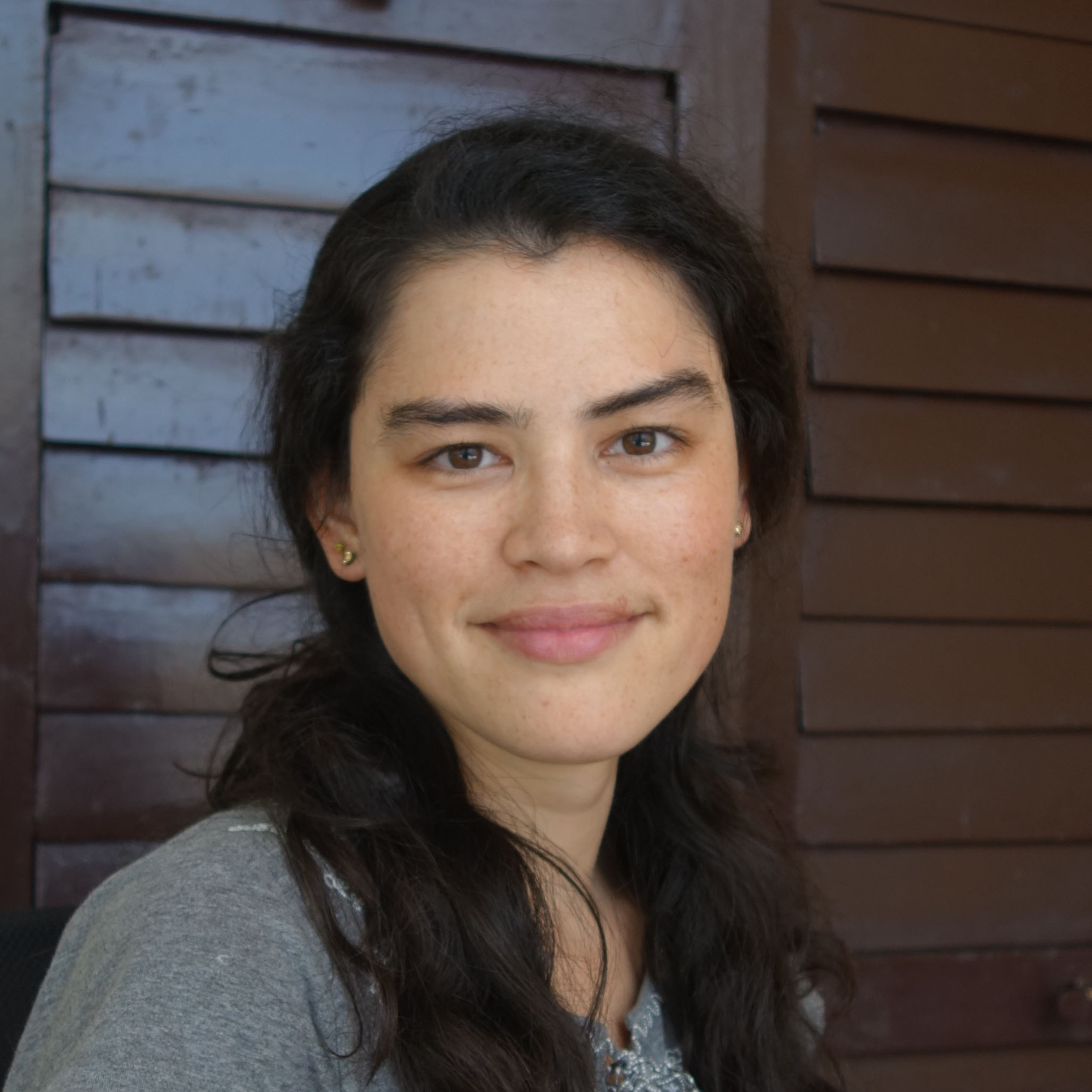
Mariana Pinto Leitão Pereira
EMERGING PROFESSIONAL
Mariana Pinto Leitão Pereira – the current Emerging Professional (EP) representing ICOMOS ISC SBH – is Macanese, from the ethnic minority of Portuguese-descendants of Macau, in China. She is a PhD Candidate at the Cambridge Heritage Research Centre (University of Cambridge), researching how diaspora communities negotiate identity through cultural heritage; and holds an MPhil in Archaeological Heritage and Museums (University of Cambridge), an MA in World Heritage Studies (BTU Cottbus-Senftenberg, Germany) and an MA in Archaeology (University of Porto). Before embarking on her PhD, Mariana worked as an archaeologist and heritage manager for the Cultural Heritage Department of the Cultural Affairs Bureau in Macau. Her work involved archaeological excavations and inventories, preparing local heritage nominations, collaborating in exhibitions and exhibition catalogues, as well as devising and implementing safeguarding mechanisms for both tangible and intangible cultural heritage. Mariana was involved with various grassroots initiatives aimed at safeguarding cultural heritage, including audiobooks, performing with traditional folkdance groups, producing scripts for documentaries on migration and research on the role of migrant associations in shaping heritage practices, including language safeguarding and revitalization. She is a founding member of the Heritage and Colonialism Discussion Group (University of Cambridge).
Mariana is also the EP representing ICOMOS Portugal, ICOMOS Portugal’s EP for the SDGWG, and member of ICOMOS ICICH. She is also a member of the Intangible Heritage Researchers Network of the Association of Critical Heritage Studies. As a student, she was involved with setting up of ICOMOS PRERICO.
Some of Mariana’s publications include:
- Doğan, E., Pereira, M. P. L., Antczak, O., Lin M., Thompson, P., Alday, C. (edts). 2022. Diversity in Archaeology. Proceedings of the Cambridge Annual Student Archaeology Conference 2020/2021. Oxford: Access Archaeology. Available at: https://www.archaeopress.com/Archaeopress/Products/9781803272818
- Santikarn, A., Doğan, E., Antczak, O., Ruf, E. R., Pereira, M. P. L. (edts). 2022. ‘Rethinking the Archaeology-Heritage Divide’. Archaeological Review from Cambridge. Volume 37.1. ISSN 0261-4332.
- de Silva Jayasuriya, S., Pinto Leitão Pereira, M., Hansen, G. (edts.) 2022. Sustaining Support for Intangible Cultural Heritage. United Kingdom: Cambridge Scholars Publishing.
- Pinto Leitão Pereira, M. 2022. Introduction. Situating Intangible Cultural Heritage and Sustainable Development: A Challenging Partnership? In de Silva Jayasuriya, S.; Pinto Leitão Pereira, M., Hansen, G. (edts) Sustaining Support for Intangible Cultural Heritage. United Kingdom: Cambridge Scholars Publishing. Pp. xvii-xxxv.
- Pinto Leitão Pereira, M. 2019. The Macanese Encontros: Remembrance in Diaspora 'Homecomings'. Macau SAR China: Instituto Internacional de Macau. Moscaico, vol. LVI.
Pinto Leitão Pereira, M., Caballero, G. 2016. Challenges of the Casino and Historic City of Macau: preserving heritage amidst the creation of stage-set townscapes. International Federation of Landscape Architects. https://caballerolandscapes.wordpress.com/2016/03/21/challenges-of-the-casino-and-historic-city-of-macau-preserving-heritage-amidst-the-creation-of-stage-set-townscapes/
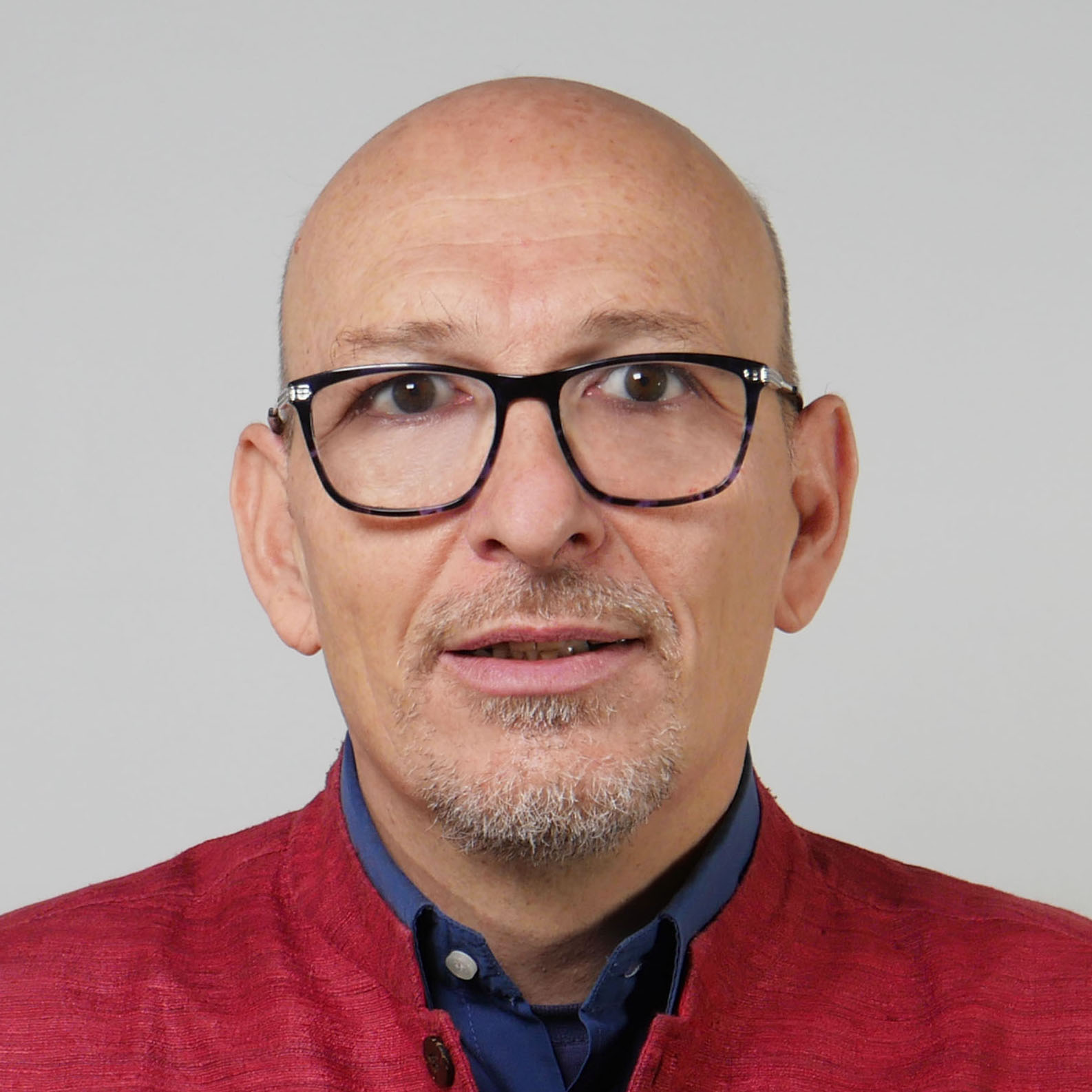
Romeo Carabelli
Curriculum Vitae & presentation
Candidacy as Vice President of Icomos ISC SBH
Contact
+33 (0)6 79.23.79.04 (mobile fr + WhatsApp) +39.348.23.04.125 (mobile it)
E-mail: This email address is being protected from spambots. You need JavaScript enabled to view it. (professional), This email address is being protected from spambots. You need JavaScript enabled to view it. (private)
Research and training engineer - Citeres UMR 7324 CNRS & UNIVERSITÉ DE TOURS http://citeres.univ-tours.fr/
Member of the research unit board & director of EMAM (Equipe Monde Arabe et Méditerranée) –
Lecturer
- Workshops for PhD candidates in social sciences – Univ-Tours – since 2017
- School of Architecture of Marrakech – since 2016 -
“Heritage and Architecture” (3rd year) - School of Landscape Design (Insa – Blois) – from 2008 to 2018 –
“Urban geography” (3rd year) - Euro-Mediterranean Univ. of Fes/Eirest Paris – 2016-17
“Preservation of cultural sites”
- Architect: Architects’ and Planners’ Association (Milan, Italy) since 1992
- Expert for the UNESCO’S WHC programme "Modernity in the Arab Countries" –
ICOMOS FRANCE member since 2011, elected in the board of directors (since 2021). Vice president ISC SBH (since 2020)
Architecture & Développement (NGO international solidarity), board member - since 2004
Architectes Sans Frontière Italie (NGO international solidarity) membre fondateur, 1998
Education
HDR Habilitation in Geography - École Normale Supérieur de Lyon (France)
Master & PhD in Geography - Université François Rabelais, Tours (France)
Degree in Architecture, Politecnico di Milano (Italy)
The main research topic of Romeo Carabelli is the integration of former colonial inheritance into the nowadays patterns of living spaces (mainly in the Southern and Eastern Mediterranean area), following transformations and heritagization methods. I focus my activities on (re)territorialization processes of colonial legacies, mainly over contemporary configuration of scattered and multinational heritage.
Last publications
2022, with Mathieu GIGOT and Georges-Henry LAFFONT, Vers un sens commun pour le patrimoine de proximité. Communautés et actions territorialisantes, Tours, ed. Mission Val de Loire, 188 pages. Downloadable here HYPERLINK "https://shs.hal.science/halshs-03846013" https://shs.hal.science/halshs-03846013 and here HYPERLINK "https://www.valdeloire.org/Ressources/Bibliographie-et-documents/Etudes-articles-theses/Vers-un-sens-commun-pour-le-patrimoine-de-proximite" \t "_blank" https://www.valdeloire.org/Ressources/Bibliographie-et-documents/Etudes-articles-theses/Vers-un-sens-commun-pour-le-patrimoine-de-proximite
2022, with Mathieu GIGOT and Amélie ROBERT, Identifier et caractériser le patrimoine de Proximité. Vers un approche participative, Tours, ed. Mission Val de Loire, 199 pages. Downloadable here HYPERLINK "https://halshs.archives-ouvertes.fr/halshs-03683440" https://halshs.archives-ouvertes.fr/halshs-03683440 and here HYPERLINK "https://www.valdeloire.org/Ressources/Bibliographie-et-documents/Etudes-articles-theses/Identifier-et-caracteriser-le-patrimoine-de-proximite" https://www.valdeloire.org/Ressources/Bibliographie-et-documents/Etudes-articles-theses/Identifier-et-caracteriser-le-patrimoine-de-proximite
2022, with Georges-Henry LAFFONT, “Vers des communs territoriaux en Val de Loire. Retours sur des expériences de caractérisation de ressources et de modalités d’action pour faire territoire autrement”, in Silvana SEGAPELI (dir.) Vous avez dit espace commun ?, Berne, Peter Lang,
2020, “Patrimoine”, in Abécédaire de la ville au Maghreb et au Moyen-Orient, Tours, PUFR, pp. 255-256.
2020, with Anna MADOEUF and Ouidad TEBBAA, “ Les éblouissement de Marrakech, réverbération d’une ville touristique, in Maria GRAVARI-BARBAS (dir.) Le patrimoine mondial. Mise en tourisme, mise en images, Géographie cultures, pages 127-146, L’Harmattan. Paris.
2019, Architecture and ways of living: traditional and modern Palestinian villages and cities, EU funded project “My Heritage! My Identity!” (ENI/2017/390-692), downloadabla here HYPERLINK "http://www.myheritage.ps" www.myheritage.ps, 168 pp. + a synthesis of 55 pp.
Last presentations
The Italian architects in the late Siam time
Conference Visio : Urban-rural Design and Conservation - Universitas Sabelas Maret – Surakarta, Indonesia - November, 19 2022
Euromed Heritage. Esperienze di progetti di valorizzazione del patrimonio storico-architettonico nel Mediterraneo
Visiting professor, Erasmus+ Geografia dei beni culturali. Università degli Studi di Cagliari, November, 9 2022.
Italian architectures in Bangkok in the 19t and 20th centuries
Webinar: Shared Built Heritage in modern Siam, September 3, 2022
Vers une construction polyarchique des territoires en Val de Loire ; patrimoines et paysages culturels en action ?
UGI-IGU Congrès du centenaire : Le temps des géographes – Time for geographers - Session : Géographie des patrimoines culturels : mutations contemporaines et enjeux renouvelés - Paris, July, 21 juillet 2022.
Villes durables au Moyen-Orient et en Afrique du Nord ?
Organisation of the research meeting, with Roman Stadnicki (Citeres) and Isabel Ruck (Carep). Carep (Centre Arabe de Recherches et études politiques, Paris) and Citeres-EMAM, Paris, June, 30 2022.
Expériences internationales et bonnes pratiques : le cas des villes italiennes
Conference: Regards croisés sur le patrimoine et droits de l’Homme : vers le renforcement de l’effectivité du droit au patrimoine culturel. Casamémoire et Conseil national des droits de l’Homme, Casablanca, May, 13 2022
Timeline of the ISC SBH history, with Mariana P.L. Pereira
Webinar: Shared built Heritage an evolutionary concept from the roots to the future, November 18 2021
Marrakech Protettorato e Modernità
Workshop: Marrakech as a Multifaceted city – In Between Urban Design Politecnico di Milano, September 27, 2021, Dastu, Politecnico di Milano (Italy)
L'autre en Terrae Sanctae?
4e Congrès des études sur le Moyen-Orient et les mondes musulmans », Congrès en distanciel, Aix en Provence, 28 June, 28 – July 2 - 2021
L'installation des Frères des écoles chrétiennes dans la Palestine ottomane, avec Raimondo Pinna
4e Congrès des études sur le Moyen-Orient et les mondes musulmans »,
Marrakech Protettorato e Modernità
Workshop on line: Marrakech as a Multifaceted city – In Between Urban Design Politecnico di Milano, December 21 2020, Dastu, Politecnico di Milano (Italy)
La verrue de Mazagão comme un pivot d’une série d’échanges multinationaux : entre Méditerranée et monde entier.
Webinar : Les mardis du patrimoine. April, 30 2021, École d’Architecture de Casablanca (Maroc).
La pietra e il cemento: il patrimonio plurale e conteso di Hebron
Conference on line: La città cosmopolita. Narra_Mi. April 19, 2021, University of Cagliari (Italie).
Un fragment de micro-histoire à partir de la réalisation d’une forteresse moyenâgeuse.
Workshop on line: Alors on dance ! Cours festivalier d’analyse culturelle et sociale en géographie. April 15 2021, Sorbonne université, Paris.
La présence portugaise au Maroc. Une histoire peu connue et une niche du tourisme global.
Workshop on line: Icomos Wuhan forum Sans Frontières. 8 novembre 2020, Wuhan (Chine).
Done in Tours (France) on February, 7th, 2023
Romeo Carabelli
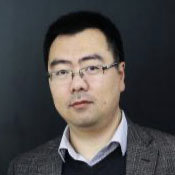
Dr. Ding Yuan
GENERAL SECRETARY
Resume
Gender - Male
Date & Place of Birth - 1973 / Wuhan, China
Nationality - P. R. China
Qualifications - Doctor of Engineering (Architectural Design and Theory). Professor of engineering. Deputy to the regional people's congress.
Activities - Founder of Crossover Forum since 2012
Founder of Wuhan Cultural Heritage Website since 2016
Founder of Crossover Reading Association since 2017
Founder of Youth Crossover Forum since 2018
Current Situation- Deputy Chief Planner of CITIC Architectural Design and Research Institute Co., Ltd., Head of Shared Heritage Research Center
MEMBERSHIP OF PROFESSIONAL ASSOCIATIONS
Co-holder of UNESCO Chair on Industrial Heritage
International Member of ICOMOS
Secretary-General of the Historical and Cultural Protection Professional Committee of Hubei Provincial Department of Land and Space Planning
Expert Member of the Committee of Historic and Cultural Cities of the Hubei Provincial Department of Housing and Urban-Rural Development
President of Wuhan Shared Heritage Research Association
Email Address - This email address is being protected from spambots. You need JavaScript enabled to view it.
Telephone - 0086/27/82829319, 0086/13554539270
Education
- Sep, 2005 -- June, 2008
Architectural Design and Theory, Doctor of Engineering, Architecture and Urban Planning College, Huazhong University of Science. & Tech. (China) - Oct, 2000 – Feb, 2003
World Heritage Studies (MA), Faculty of Architecture, Civil Engineering, Brandenburg Technical University, Cottbus (Germany) - Sep, 1991 – Jul, 1995
Bachelor of Arts, Humanities School, Hubei University (China)
Experience
- 2015 -- 2023
Deputy Chief Planner of CITIC Architectural Design and Research Institute Co., Ltd., Head of Shared Heritage Research Center - July, 2010 – Dec, 2014
Chief Planner of Hubei Provincial Ancient Building Protection Center - 2007.12-2010.6
Post-doctor, School of Architecture and Urban Planning, Tongji University; Researcher of the Research Center of National Historic and Cultural Cities of Tongji University - May, 2004 – Sep, 2004
Lecturer, College of Resources and Environment, Hubei University - July 1995 -1999
Assistant Economist and Secretary of the President of the Research Office of Bank of Communications Wuhan Branch
PRIZES AND AWARDS (Engineering Survey and Design)
1 Excellent Engineering Survey and Design (China, Hubei Province, Wuhan):
The third prize of National Excellent Engineering Survey and Design(2021): the Conservation Project Jackson Gymnasium
The first prize of Hubei Provincial Excellent Engineering Survey and Design (2021): BIM of the Conservation Project of Jackson Gymnasium
The third prize of Hubei Provincial Excellent Engineering Survey and Design (2020): the Conservation Project Jackson Gymnasium
The second prize of Provincial Excellent Engineering Survey and Design (2021): the Conservation Project of Hankou Holy-book House
The second prize of Wuhan Excellent Engineering Survey and Design (2020): the Conservation Project of Hankou Holy-book House
2 ISOCARP (International society of city and regional planners):
ISOCARP Award of Excellence (2008): Grand Canal Conservation and Study
Routledge Poster Prize (2011): Wuhan City:Hidden Forms & Underlying Structure
3 Shanghai Association for Science and Technology:
Shanghai Science and Technology Achievement Award (2009): The Study of Pudong Historical Buildings
Academic papers (English)
1, Kanyu: the Forgotten Perspective in the Understanding of Intangible Setting in China’s Heritage Sites -----The ICOMOS Scientific Symposium: Monuments and sites in their setting – Conserving cultural heritage in changing townscapes and landscapes, Xi’an, China, 2005
2, Feng-shui: The Intangible Heritage in Intercultural Context ----- Asia-Euro Culture and Development Network (AECD Network) international conference, Sep, 2006
3, World Heritage Studies: A New Program in German Architectural Education and its Impact on Chinese Architectural Education ----- New Architecture, 2006
4, The Integration of Globalization & Localization – Architects, 2007
5, China’s Modern Heritage Studies under the Dimension of Cultural Anthropology ---- International Symposium Committee of “Heritage Education – Capacity Building in Heritage Management”, June 14th-18th, 2006, in Cottbus, Germany----- International Symposium Committee of “Forum UNESCO - University and Heritage”, Sep 2006, UNESCO World Heritage Center, organized by the University of Florence, Italy
Academic papers (Chinese)
1 As the first author or corresponding author, more than 10 academic papers in the academic journals in China, from 2005 to 2022
2 Six abstracts of the reports on historic villages were published in the column of "Relics of the Pearl" of the top academic magazine "Urban Planning", from 2005 to 2019
3 Participated in a project of the National Science Project “Compass plan” (2010, the first person in charge); Participated in a project of the National Natural Science Foundation (2013, the second person in charge)
Publications
1 The Changjiang River Civilization, Coauthor, 2023, Springer (English Version), Zhonghe Press Company (Hongkong Version), 2021, CITIC Press Group (Chinese Version)
2 Shared History, Shared Heritage: A Story of Wuhan (1860-1959), Coauthor, 2021, CITIC Press Group
3 Creative Cities, Shared Heritage: Selected Papers of the Crossover Forum (2012-2020), Chief Editor, 2021, Southeast University Press
4 Humanities, Habitat and the New Era: The Role of Cultural Routes in the Sustainable Development of Urban and Rural Areas: Selected Papers of the No. 7 Crossover Forum, Chief Editor, 2019, Southeast University Press
5 Wuhan Historical Architecture Atlas, Coauthor, 2017, Wuhan Press Group
6 Cultural Routes in China, Chief Editor, 2015, Oriental Press Center
7 Chinese Architecture, Chief Editor, 2015, Jinglian Press Company (Hongkong Version), 2012, Zhonghua Press (Mainland China Version)
8 Engineering-Culture-Landscape:Selected Papers of the No. 2 Crossover Forum, Chief Editor, 2014, Southeast University Press
9 Kanyu (Fengshui): the Forgotten Setting in China, monograph, 2011, Southeast University Press
10 Cultural Routes: Between the Tangible and the Intangible, 2011, Southeast University Press
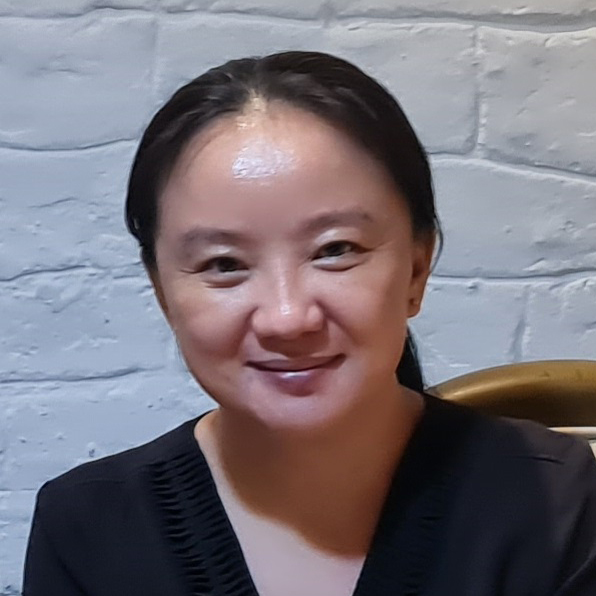
Dr. Ai Tee Goh
VICE-PRESIDENT
Dr. Ar. Ai Tee Goh has special interest on housing and heritage. She set up A T GOH ARCHITECT (SP/G 45), a sole proprietorship architectural practice in 2011. She believes that a successful building work resulting in the ways of conduct, dedicated teamwork which include active collaboration amongst stockholders. She obtained her PhD in year 2010 from University of Liverpool titled ‘Potential of courtyard housing as solution for creating family housing in urban area in the UK’. Her mini dissertation during her B(Arch) and BSc (Arch) on heritage buildings are Blue Mansion in Penang and the Oldest Chinese Temple in Johor. She has participated in community led heritage conservation project in Fez, Morocco in year 2009, then assisting in 3D drawings for selected historical public bath in MENA cities in year 2010. From 2011 to 2013, she involved in four Traditional Village Rehabilitation Projects in Saudi Arabia, and participated in community building workshops in Penang. In year 2015, she attended the workshop on safeguarding Outstanding Universal Values in Penang.
Since joining ICOMOS Malaysia in year 2015, she has been an active member of ICOMOS International Scientific Committee on Shared Built Heritage (ISCSBH), participating and organizing study tours. In 2020, she sits in as one of the Reviewer for abstracts/ papers submitted to the ICOMOS 2020 Scientific Symposium (Shared Heritage category). She contributed to chapters relating to traditional housing and housing development in Kuala Lumpur on the KLSP2020-2040 Review Group. Apart from being an ICOMOS Malaysia Emerging Professional member initiating the Heritage School Rehabilitation Program for ICOMOS Malaysia EPWG in year 2020 and being moderator for mini symposium at the Courtyard Heritage Assembly organized in year 2022.
She is Board Member of ICOMOS Malaysia since 2020. She Chairs the ICOMOS Malaysia New Village Working Group set up since March 2020 with aims to study the potential of showcasing selected New Villages as National Heritage as well as candidates for UNESCO World Heritage Listing.
Recente publications
- 2022 - ICOMOS Malaysia New Village Working Group (NVWG), Report 1 (15 May 2022).
Technical Report. ICOMOS Malaysia New Village Working Group, Kuala Lumpur, Malaysia, 251p. (https://openarchive.icomos.org/id/eprint/2703/)
- Home Guard in Malaya, p. 61-74
- Cha’ah New Village in Johor Malaysia: A Unique Rural Cultural Landscape with Colonial -Planning Idea and Community Architecture, p.75-138
- Town Planning in New Villages in Malaya: A Case Study on Cha’ah New Village, Johor, p.139-155 - 2021 - Isa, Mariana, Yong, Chee Keat, Azhari, Afzal, Kamaludin, Azzat, Nik Muhammad,
Nik Mastura, Shahidan, Shaiful Idzwan, Thang, Boon Ann, Steven, Wong, See Huat,
Chuo, Dominic, Goh, Ai Tee, Abd Sukor, Mohd Azmi, Jamaluddin, Mohd Radzi, Yunos, Naimran, Malek, Bukhari and Tawang, Maulud (2021) Ringkasan Keperluan Konservasi Rumah Beserah (Conservation Statement for Beserah Resthouse). Working Paper. ICOMOS Malaysia, Malaysia, 64p. (https://openarchive.icomos.org/id/eprint/2517/) - 2020 - Isa, Mariana, Goh, Ai Tee, Abdul Majid, Hajeedar, Yuen, Anne, Abdul Rahman, Faisal, Shahidan, Shaiful Idzwan, Che Amat, Rohayah, Mohd Ali, Rosli, Koh, John,
Mat Radzuan, Indera Syahrul, Kamal, Mustapha and Sharuddin, Shahariah Norain (2020) The Kuala Lumpur Heritage Agenda: Reviews and Recommendations for the Kuala Lumpur Draft Structure Plan 2040 & Kuala Lumpur City Plan 2020 by ICOMOS Malaysia. Discussion Paper. ICOMOS Malaysia, Kuala Lumpur, 99p (https://openarchive.icomos.org/id/eprint/2401/)
Recente presentations
- 2022 - Nomination Site of Cha’ah New Village, in Symposium titled Second Glance: New Vision for New Village. Pencalonan Kampung Baru Di Malaysia Sebagai Tapak Warisan Dunia UNESCO (12-14 August 2022)
- 2022 - Research on New Villages as the Representative of Malayan Historic New Villages, in Symposium titled Second Glance: New Vision for New Village. Pencalonan Kampung Baru Di Malaysia Sebagai Tapak Warisan Dunia UNESCO (12-14 August 2022)
- 2022 - Housing for the People: An Overview of Housing Provision in Kuala Lumpur (1901 to 2020), in Webinar Karnival KL Dulu, 12-13 March 2022
- 2021 - Heritage Schools: In Shaping the ‘KL Identity’, Perekabandar Urban Talk #5, KL identity and heritage at the crossroads: The plight of Convent Bukit Nanas, 25 April 2021. (to view: https://www.youtube.com/watch?v=E2yC_OjlCEE)
- 2020 - Courtyard Housing: A Typology for Sustainable Urban Development? Hokdulu Talks, ICOMOS Malaysia Emerging Professional’s Program, 28 Nov 2020
(to view, https://www.youtube.com/watch?v=Ixap5zJ3ox8) - 2020 - Review on Draft KL Structure Plan 2040 – Housing, in Public Hearing session organised by DBKL, Bilik Mesyarat Utama, DBKL Tower 1, 27 July 2020
- 2019 - ‘The Role of Emerging Professionals on National Committee Boards: the Malaysia and Spanish Examples, ICOMOS National Committees Meeting, 15 Oct 2019, Marrakesh Morocco. The report prepared by Tiong Kian Boon, Goh Ai Tee and Mariana Isa (ICOMOS Malaysia), Alicia Castillo Mena, Mikel Landa Esparza, and Clara Villalba Montaner (ICOMOS Spain)
Recente study tours and workshops
- Study Tour to Shared Built Heritage in Thailand and Ayutthaya. Co-organiser with International Scientific Committee on Shared Built Heritage, International Council of Monuments and Sites, 31 Oct 2022 to 5 Nov 2022.
- Study Tour and Workshops to Shared Built Heritage in Morocco (Marrakesh, Essaouira, Safi, El Jadida, Casablanca, Rabat, Tangier and Tetouan). Co-organiser with International Scientific Committee on Shared Built Heritage, International Council of Monuments and Sites, 18 Oct 2019 to 1 Nov 2019.
- Study Tour and Symposium to Shared Built Heritage in Estonia, Finland, Russia Organised by International Scientific Committee on Shared Built Heritage, International Council of Monuments and Sites, 4-21 June 2018
- Study Tour and Symposium to Bengal India - Europe along the Hooghly River: Serampore (Danish), Chandannagar (French), Chinsurah (Dutch) and Bandel (Portuguese), Organised by ICOMOS India East Zone and International Scientific Committee on Shared Built Heritage, International Council of Monuments and Sites (ICOMOS), 1-8 Dec 2017
- Study Tour to Architecture of Meiji-, Taisho- and Showa Period in Japan, Organised by International Scientific Committee on Shared Built Heritage, International Council of Monuments and Sites, Oct 2015 to 25th Oct 2015
- Workshop on Safeguarding Outstanding Universal Values, by Dr Donal Ellsmore, 11-13 March 2015, Teochew Association Hall, Penang, Organised by George Town World Heritage Inc., Penang.
- Workshop and Field Trip with the Year 5 Architecture Students from Manchester School of Architecture, UK on Traditional Courtyard Housing in Fez, Morocco from 23-27 October 2011 organised by Dr Magda Sibley, Director or Postgraduate Research, School of Environment and Development, the University of Manchester, UK
- Community Building in Penang Heritage Sites Workshop from 19-21 September 2011 organised by Asian Coalition for Housing Right, Think City Sdn Bhd, Penang Heritage Trust, George Town World Heritage Incorporated, and Arts-ED
- Community Architect Meeting from 15-16 September 2011 organised by Asian Coalition for Housing Right
- Regional Community Architects Meeting: Chiang Mai, Thailand from 13-16 June 2010 organised by Asian Coalition for Housing Rights (ACHR)
- AHRC Project:The Historic Hammams of North Africa and their Survival into the 21st Century. To assist Dr Magda Sibley and Dr FodilFadli in 3-Dimensional Digital Model for 5 Hammams; HammamSidna, Algiers, HammamSahabTabaa, Tunis, HammamTanbali, Cairo, HammamDarghut, Libya and HammamQannaria, Marrakesh.
- Hammamed Project: Raising awareness for the hammam as a cultural heritage for the Mediterranean area and beyond, under RMSU Euromed Heritage IV Programme. To assist Dr Magda Sibley in 3-Dimensional Digital Model for Hammam Al Seffarine, Fez, Morocco.

